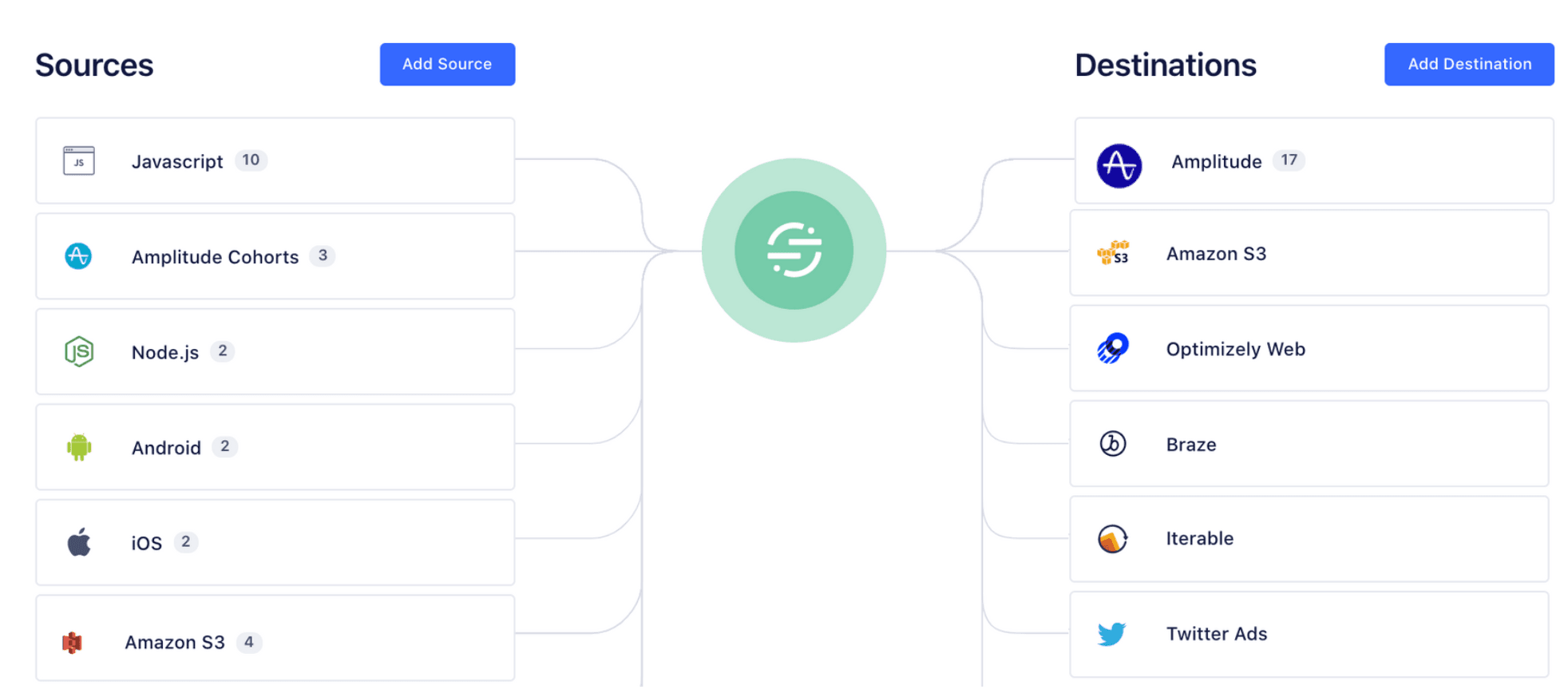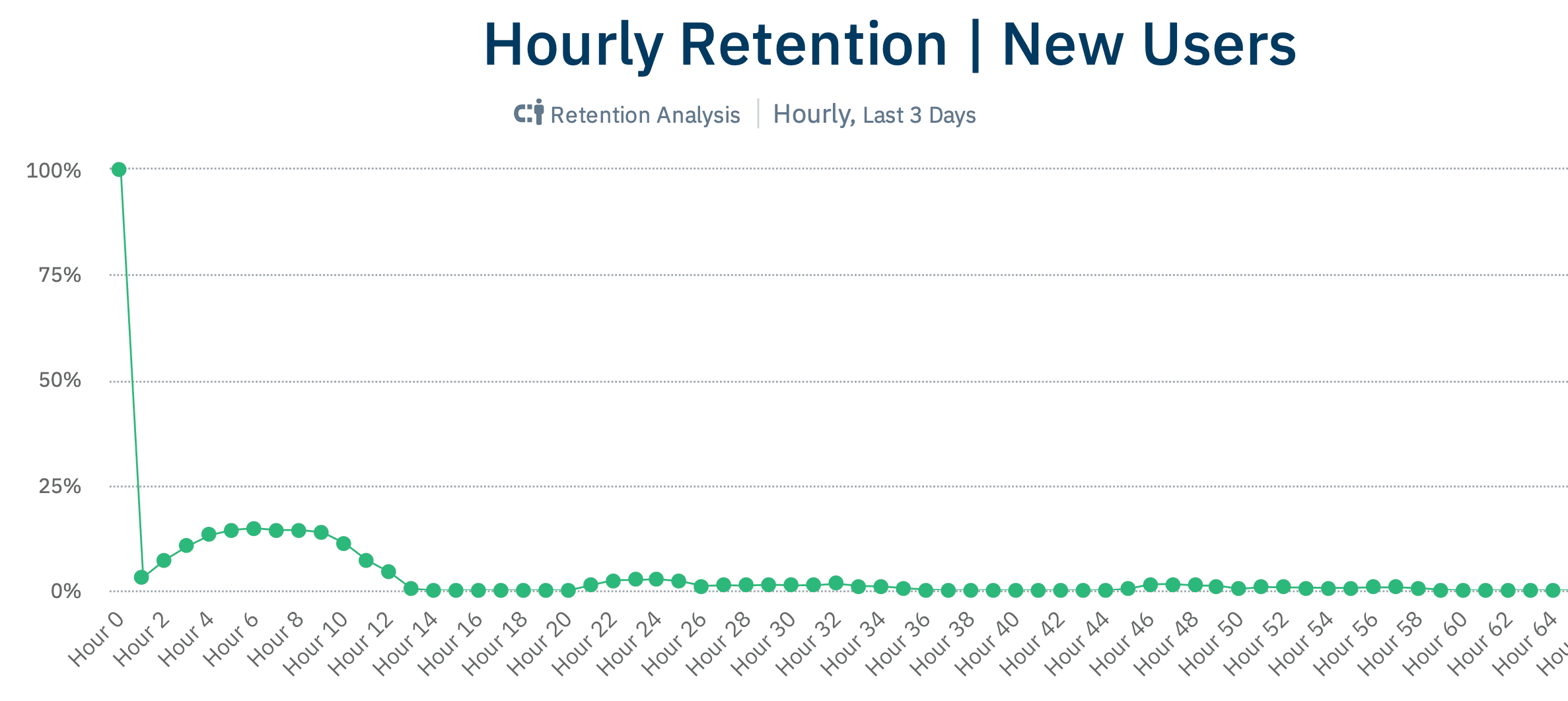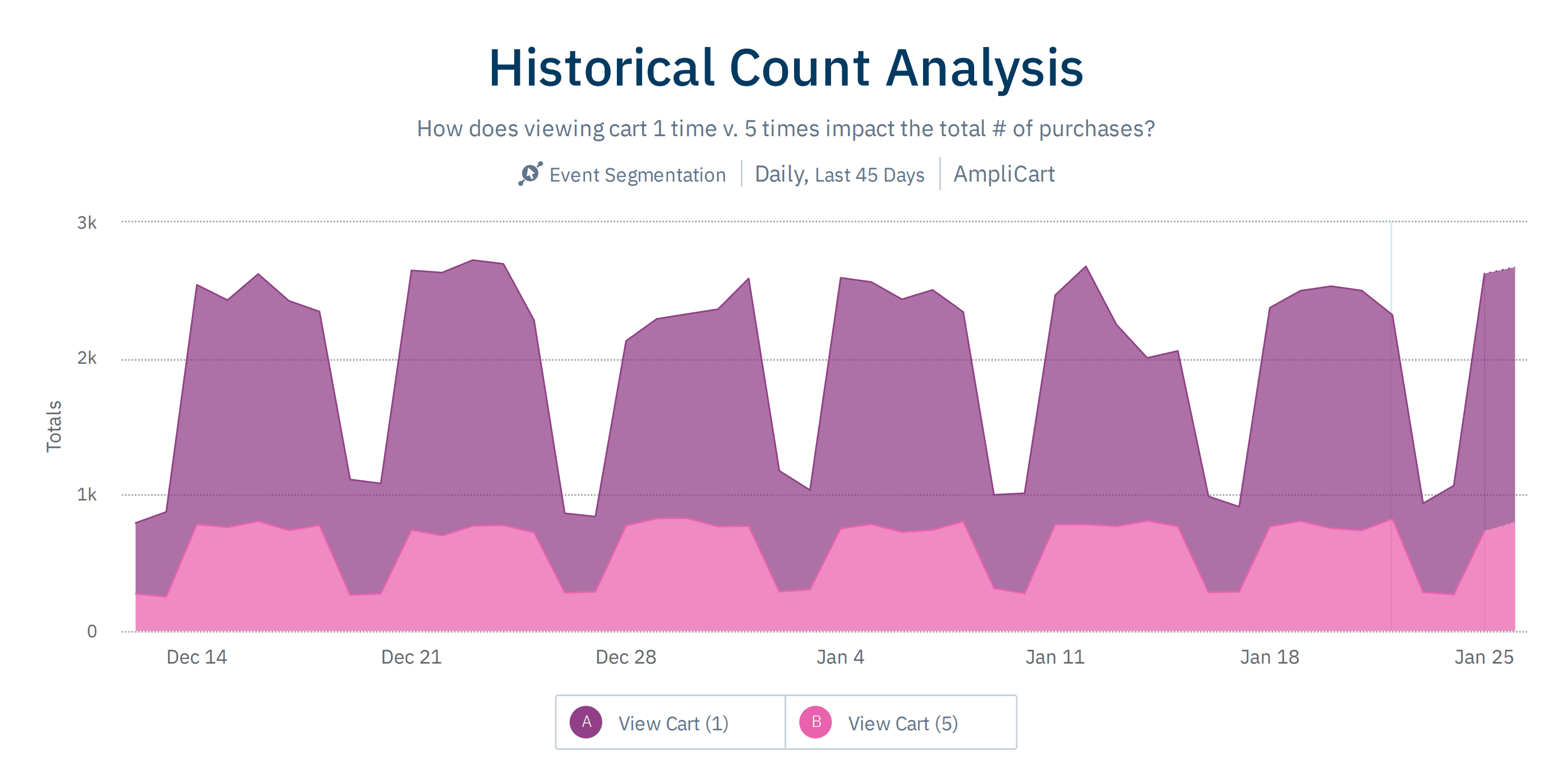Maximize the ROI of Your Data Management Platform
An effective data management platform is crucial for any growing company. Pair it with the right product analytics for maximum ROI.
So let’s assume you’ve invested a chunk of money—in some cases $1 million or more—into a state-of-the-art data management platform (DMP) for your company. In doing so, you’ve taken an important step toward making your company truly data-driven. But just because you’ve now invested in a central location to marry your various data sources, this doesn’t necessarily mean you’re unlocking all of the value of said data.
Ensuring ROI is realized from your data management platform ultimately involves deriving insights from the customer data you’re aggregating. To accomplish this, you’ll need to complement your DMP with the right tools, and a high-performanceproduct analytics solution should be one of the first items on your list.
What is a Data Management Platform?
A data management platform is where a variety of customer data is collected, stored, and organized. Today, future-thinking product, engineering, design and marketing teams use DMPs to manage data of various types from multiple data streams (and a potentially massive number ofevents). An effective data management platform will not only house your data but also include tools to quickly send it out to the appropriate destinations.
Error-prone data naturally puts your product team’s plans at risk. Your DMP unifies your many data sources as well as all cross-channel touchpoints with your users. In doing so, your DMP prevents the kind of duplication and erroneous data entry you’d experience when trying to unify the same range of data sources, as compared to without.
You could also think of a data management platform as a more sophisticated data lake or data warehouse. DMPs aren’t designed to be the central location for in-depth user analysis, such as tailoredcohort creation, conversion analysis, and the like – which we’ll come to shortly. But you can and should think of your DMP as ground-zero for your product team’s data-driven work.
DMPs are also referred to as Customer Data Platforms (CDPs). Examples of top-notch DMPs/CDPs includeSegment,mParticle, andTealium, to name a few.

Segment Connections Dashboard

mParticle Connections Dashboard
Combining Your DMP with Product Analytics
While DMPs are powerful on their own, their ability to help you perform granular user analysis is limited. You may find that only a subset of employees (usually in data science or business intelligence roles) in your company are proficient in writing SQL queries against your data, thus limiting the ability to democratize your own data across teams.
This is one of several compelling reasons as to why you should strongly consider integrating your DMP with a product analytics platform. Another strong argument is that, in integrating your DMP with a powerful analytics platform, you can more confidently guarantee a return on the investment made to ensure your data is the source of truth, as well as clean, legible, and actionable. Once you connect your DMP with a product analytics platform (likeAmplitude), you can then enable your entire company—regardless of SQL know-how or analytics prowess—to carry out sophisticated analyses in a self-reliant manner.
Product analytics platforms are designed to unlock your existing data—and to make the exploration of said data easy for anyone within your company. In other words, data that was once only accessible to a few can now be democratized across the board—from designers, marketers, product managers, customer success, and sales to upper management. In lowering the complexity threshold normally associated with generating reports, you can ensure all of your teams are enabled to visualize and understand your users’ relationship to your product.
Analyses You Can Run by Connecting Amplitude with Your Data Management Platform
Connect your data management platform to a product analytics tool like Amplitude and you’ll find that more of your organization has access to your customer data. As a result, your teams can glean more insights from the data and find new questions to ask.
By using a combination of a DMP (also known as a CDP) and a product analytics tool like Amplitude, you can perform robust analyses, such as:
Funnel Analysis

A funnel analysis is used to track the flow of users along any critical path within your product. For example, a new user onboarding funnel that measures conversion through the steps new users take from creating their account to reaching a critical milestone (such as sharing a post) that signals the end of onboarding. Alternatively, for a purchase funnel within an ecommerce app, you can easily understand what is driving users to convert (or not) – and even track how many users convert from when they add an item to their basket to when they check out.
Learn more: Analyze and Optimize Your Funnel for Conversion
Pathfinder Analysis

In Amplitude, the Pathfinder chart shows all the events that users fire in your product, and the sequences of those events (also called paths) that users take during a specified time. This makes it easier to identify common ways that users arrive at, or begin with, critical steps within your product itself.
For example, one could easily understand what their users are doing once they authenticate their email address and log in. However, are the same users actually following the thoughtfully-designed steps they were meant to follow, or are they navigating through these state changes in a less direct way, based on their own motivations? Pathfinder will help you understand all the roads that lead to (or begin with) these decisions your users make.
Alternatively, in an ecommerce checkout flow, you can also explore the myriad of ways users are reaching the final checkout step—and use the insights gleaned from Pathfinder to make the payment process more efficient. Many teams accomplish a frictionless workflow by identifying off-shooting branches, and then eliminating any barriers to conversion by simplifying the process.
Learn more: Video Walkthrough: Pathfinder
Retention Analysis

Retention analysis allows you to gauge the rate at which users return to your platform after performing an initial event, such as signing up, or being exposed to a personalized advertisement. Amplitude’sretention analysis chart doesn’t just tell you the time that has elapsed between two events – it can break your retention down by user segment. For example, applying user segments (defined by behaviors performed, location and device type) can help you more deeply understand the relationship between your users’ attributes and their long-term retention.
Learn more: Measuring Product Market Fit with Retention
Historical Count Analysis

Oftentimes, conversion analysis is limited, largely due to the inability to understand if the events taken by your users are happening for the 1st time, or anytime. However, within Amplitude you can unlock the milestone moments and motivations behind your customers’ behavior by using historical count. Historical count represents the total number of times an action has been performed, and allows you to understand whether it’s the fifth play or the seventh play of a video that drives a user to subscribe, or how many products an ecommerce user will browse before making their final purchase. Outside of Amplitude, generating an analysis like this would require a complex SQL query, in a DMP or a SQL table within another 3rd party tool – but in Amplitude, this can be done in just a few clicks!
Learn more: Identify high-value users with Historical Count analysis
Decrease Workload by Instrumenting Your Product Analytics and DMP Concurrently
We invest in tools and software because they save our businesses time and money. By investing in a DMP and product analytics solution concurrently, you’ll effectively reduce the quantity of work required for a solidinstrumentation – which is a required set-up process for software tools, data management and product analytics platforms alike.
Let’s consider a double-implementation approach as it pertains to defining your internal data dictionary, as an example. If you have a data taxonomy that’s imprecise or unclear to begin with, you might as well not be collecting data at all. What this means is – within a mismanaged event dictionary, your critical user actions could be mis-labeled, duplicated, or incorrectly classified. Even state-of-the-art DMPs do not necessarily come optimized for building robust taxonomies. It’s often the case that companies will instrument their way through their DMP set-up, only to realize later that their taxonomy is missing events – or user properties – that are innately tied to defining and attaining desired business outcomes.
By involving your product analytics provider from the early phases of your DMP implementation, you can rest assured that your taxonomy will be correctly implemented the first time, avoiding re-work later on.
When evaluating DMPs and product analytics tools alike, bear in mind that you can save yourself the stress of building your data dictionary twice by selecting DMPs and analytics platforms that share similar data structures and implementation processes. As a quick example, the data structure and implementation cycle employed by Segment and Amplitude are incredibly similar. Thus, the onboarding and adoption methodologies are similar. In addition, DMPs or CDPs often have cohesive and long-standing partnerships, which make working with both vendors at the same time a streamlined and less complicated process.
Use Product Analytics to Uncover the Insights in Your Data
As we’ve discussed, your ideal DMP and product analytics solution should work seamlessly in concert. However, even the highest-rated DMP may not allow you to harness the full value of your company’s data by itself. For that reason, you should consider investing in product analytics at the same time you invest in your DMP. An alternative way to think about this is: for every data point collected within a DMP, your chances of obtaining ROI diminish without a complementary product analytics tool to surface critical insights within your data.
An additional thought to consider is that a DMP or CDP is likely not the first place product managers will go to explore their users or conduct advanced analysis. The beauty of a product analytics platform is that it makes exploration of data a seamless process for non-technical roles. Non-tech savvy employees can leverage a product analytics platform to uncover critical or at-risk cohorts of users that are either driving engagement, or are the source of churn. You can create segments and cohorts in a DMP as well, but only if you know exactly which audiences you want to target and create a personalized experience for. Meanwhile, one of the most forefront benefits of a best-in-class product analytics tool is that it opens the floodgates for your team to unearth valuable user personas that weren’t previously known.
Oftentimes, data-driven teams report finding similarly that querying capabilities in DMPs are very one-dimensional. This is due in no small part to the fact that a high level of fluency in SQL alongside knowing exactly what the result should return are required to generate any meaningful value. By contrast, a product analytics tool like Amplitude can help you spot signals of a broken workflow, realize more accurate retention windows, and double-down on milestone events within your users’ experience – without any headache-inducing data breadlines or siloes between teams.
It pays to think of your DMP and your product analytics platform as two halves of a whole; you can’t get your product analytics running on poorly collected and stored data, but you also can’t extract more than a fraction of your DMP’s ROI without an effective product analytics tool’s capabilities.
The Rule of Two
To summarize, the optimal way to generate the most ROI from a DMP or CDP is not to set it and forget it. Having a reliable means of collecting and storing your data is key to building a cohesive data strategy for your product team. Still, your DMP will not come with all the tools necessary to build a truly useful or accurate picture of your users’ behavior.
For teams seeking to graduate from a mindset of having “siloed data used by a few” to that of “enriched data benefitting many,” your best bet is to start by pairing your DMP with a product analytics tool that complements and enhances it. Your entire team will have access to your own existing data from all of your various sources within a DMP—and can also take advantage of a self-service product analytics platform to perform a variety of analyses, especially those that reveal the moments in the customer journey that drive business value.
Taking this inaugural step is just the start of a robust user-focused product journey, however. To take your investment a step further, consider integrating marketing automation, split-testing, and user engagement tools with your product analytics platform. In doing so, you’ll increase the value from both your DMP and product analytics tool, and can then utilize these integrations alongside them to create tailored product experiences.
We invite you to check out a few of the integrations below, and learn more about what you can accomplish with a best-in-breed tech stack:
- Braze & Amplitude – Create incredibly tailored cohorts in Amplitude and target them effectively by syncing to Braze.
- Iterable & Amplitude – Better understand how users engage across all channels, and how this engagement affects their usage down-funnel within your app or website. Amplitude users can then identify and sync Behavioral Cohorts back to Iterable to achieve personalized messaging.
- SendGrid & Amplitude – Share all user data in real-time and allow non-technical product and marketing team members to synthesize your marketing and communication efforts with user behavior and product analytics.
- Intercom & Amplitude – Engage your users based on how they’ve interacted with your product and their lifecycle timing, and leverage Amplitude’s powerful segmentation capabilities in order to personalize your campaigns by targeting the right users with the right messages along their journey.

Sam Edwards
Former Global Technology Partner Manager, Amplitude
Sam is a global technology partner manager at Amplitude and former solutions engineer and customer success manager. She specializes in helping businesses reach their revenue goals, scale for growth, and build the best product for their users.
More from Sam




